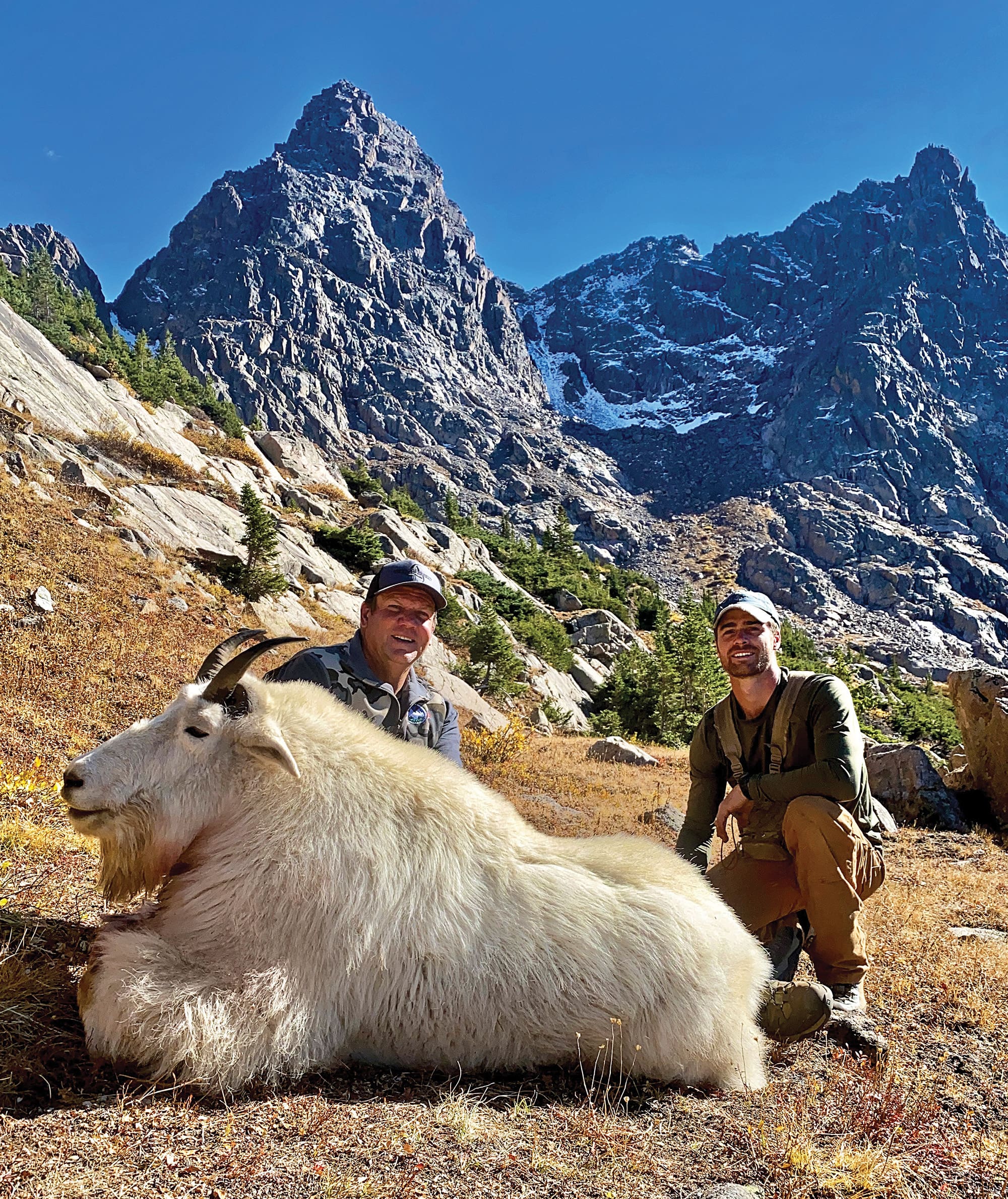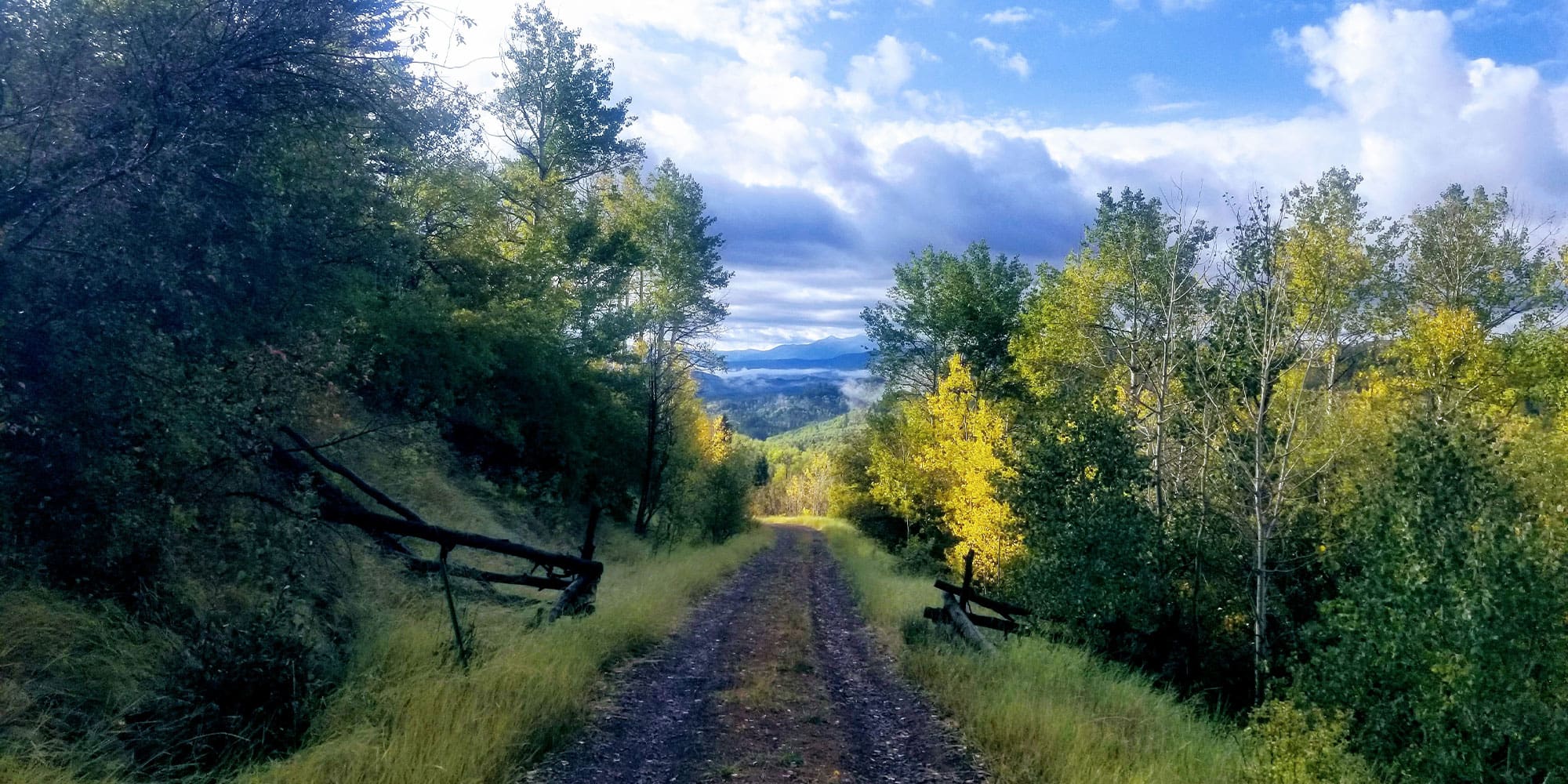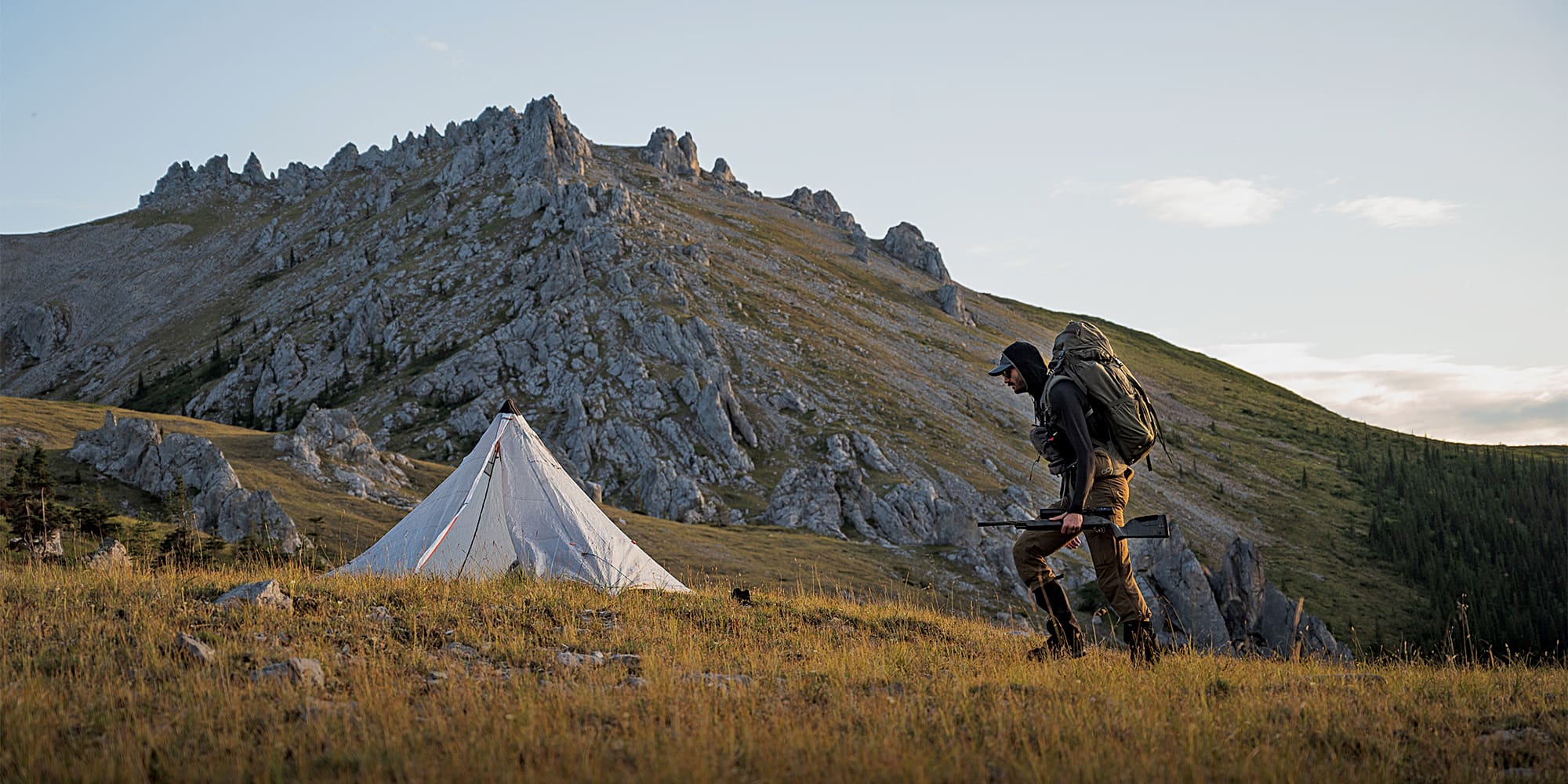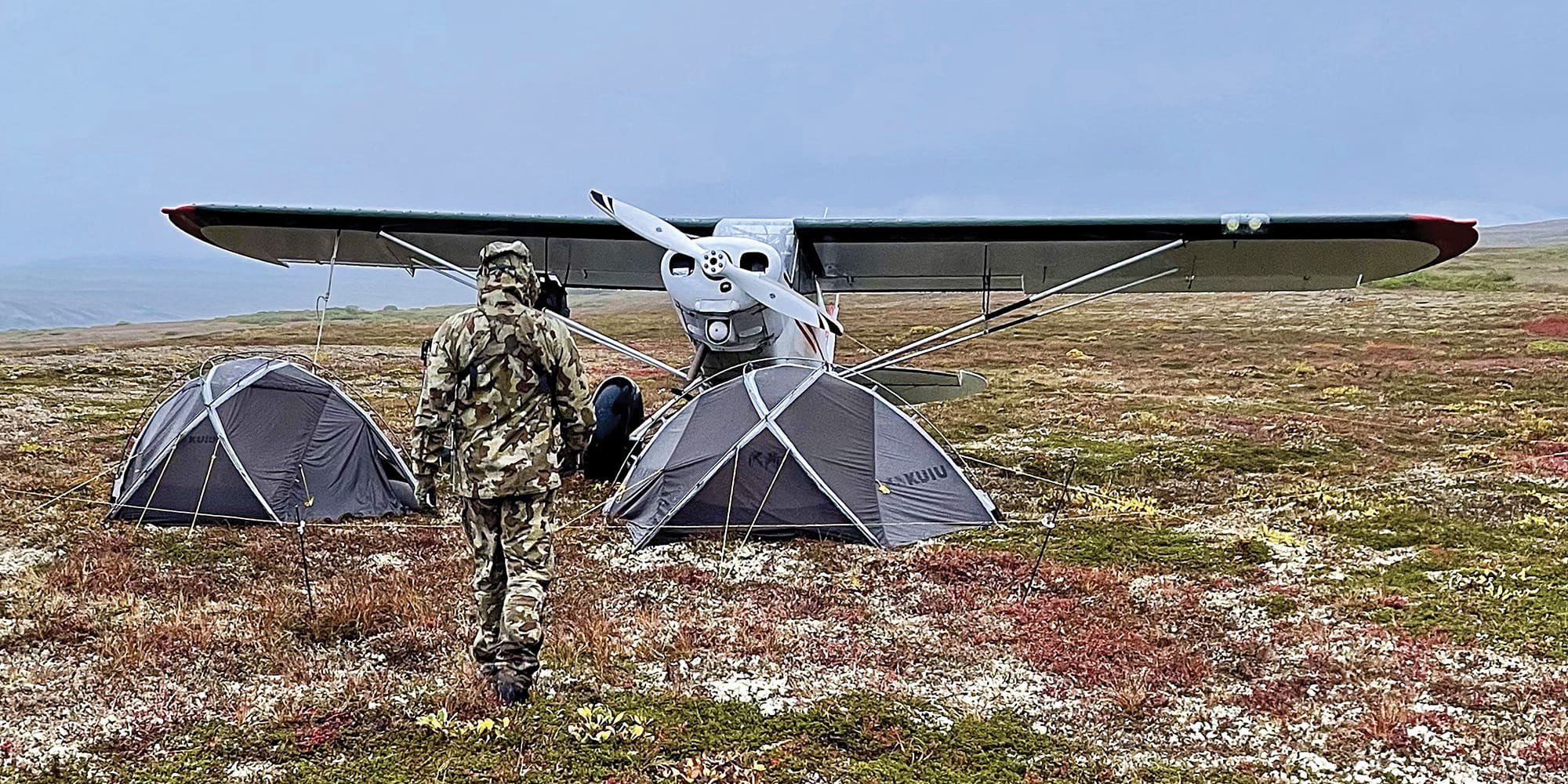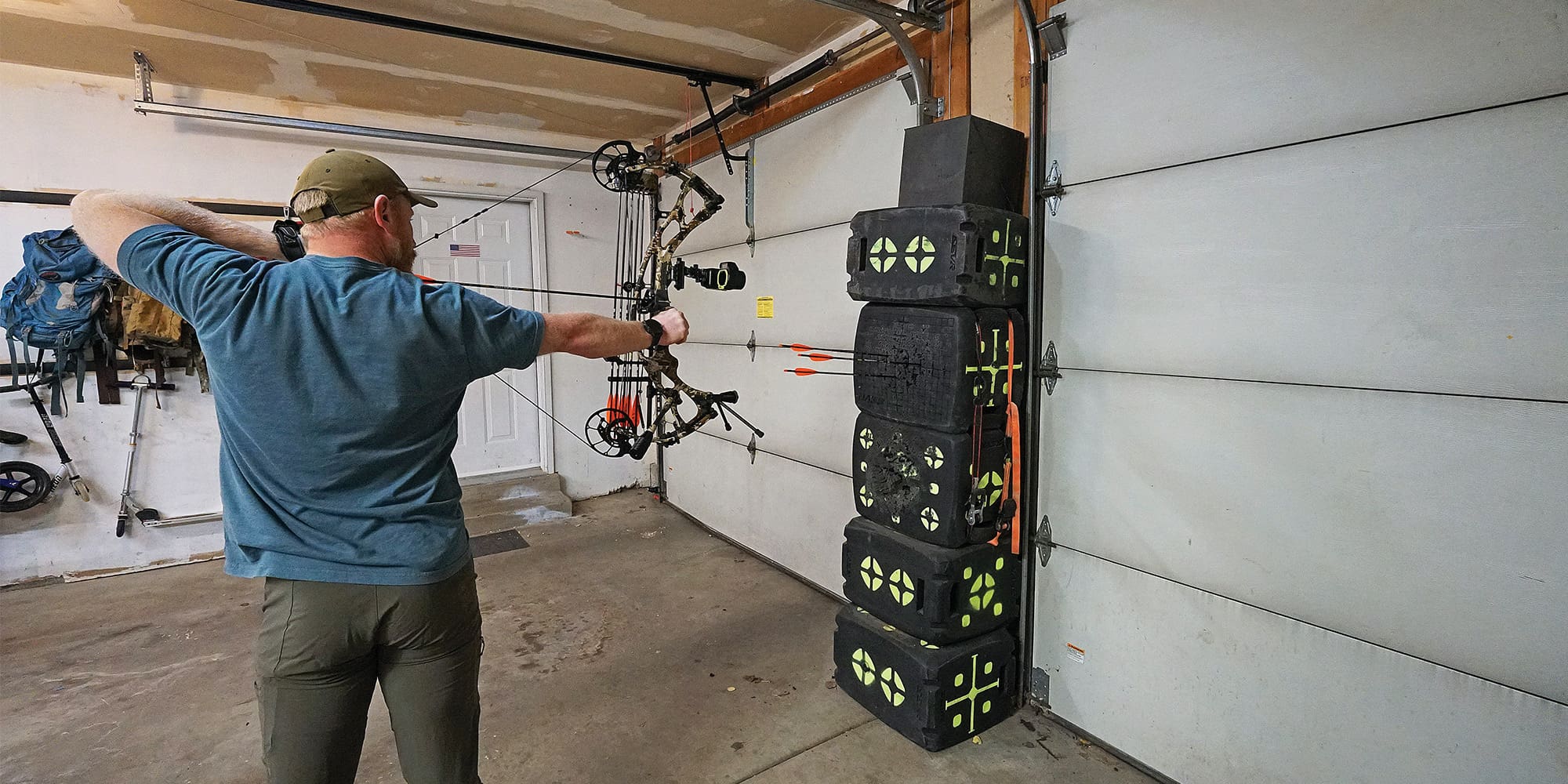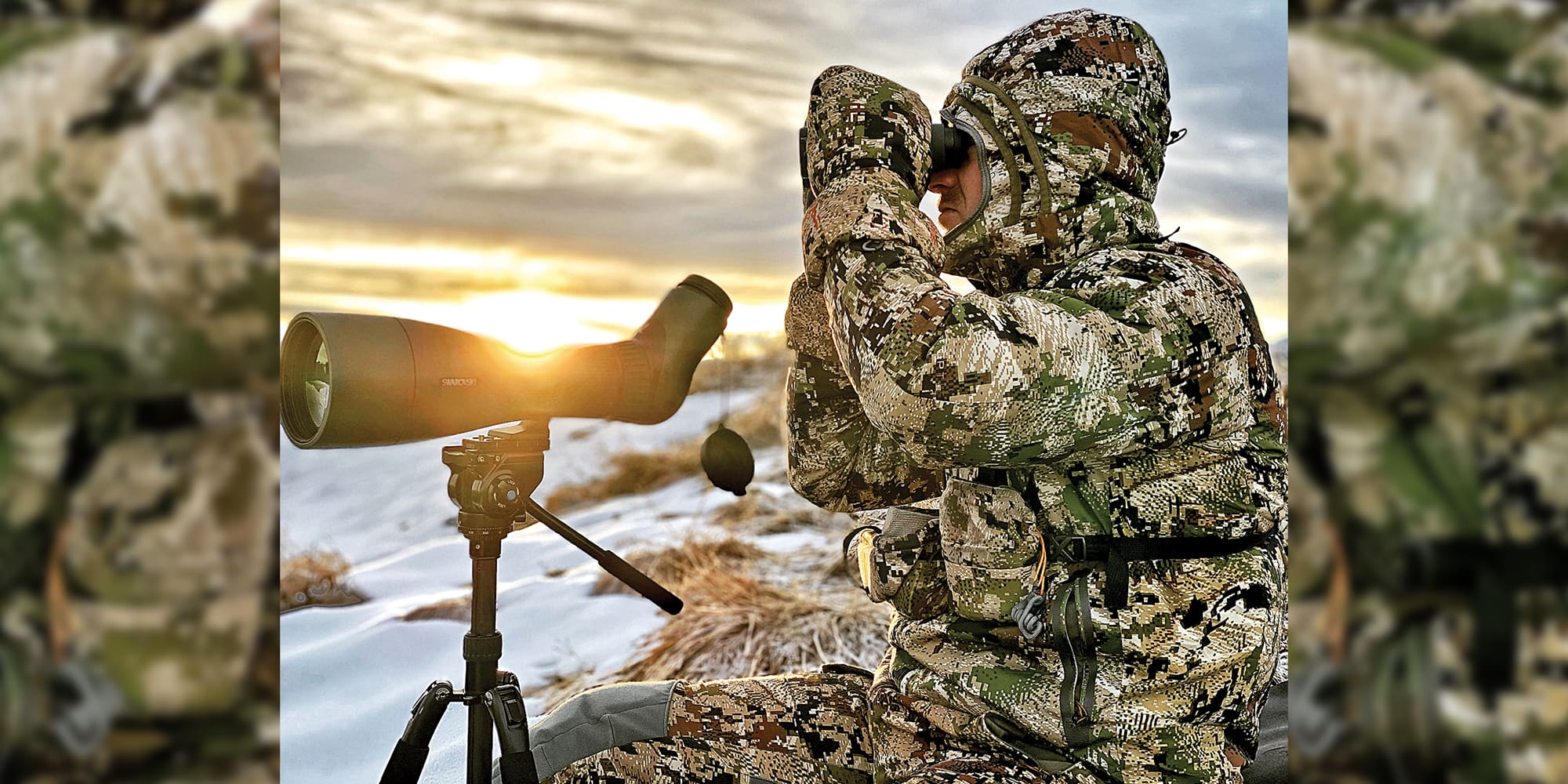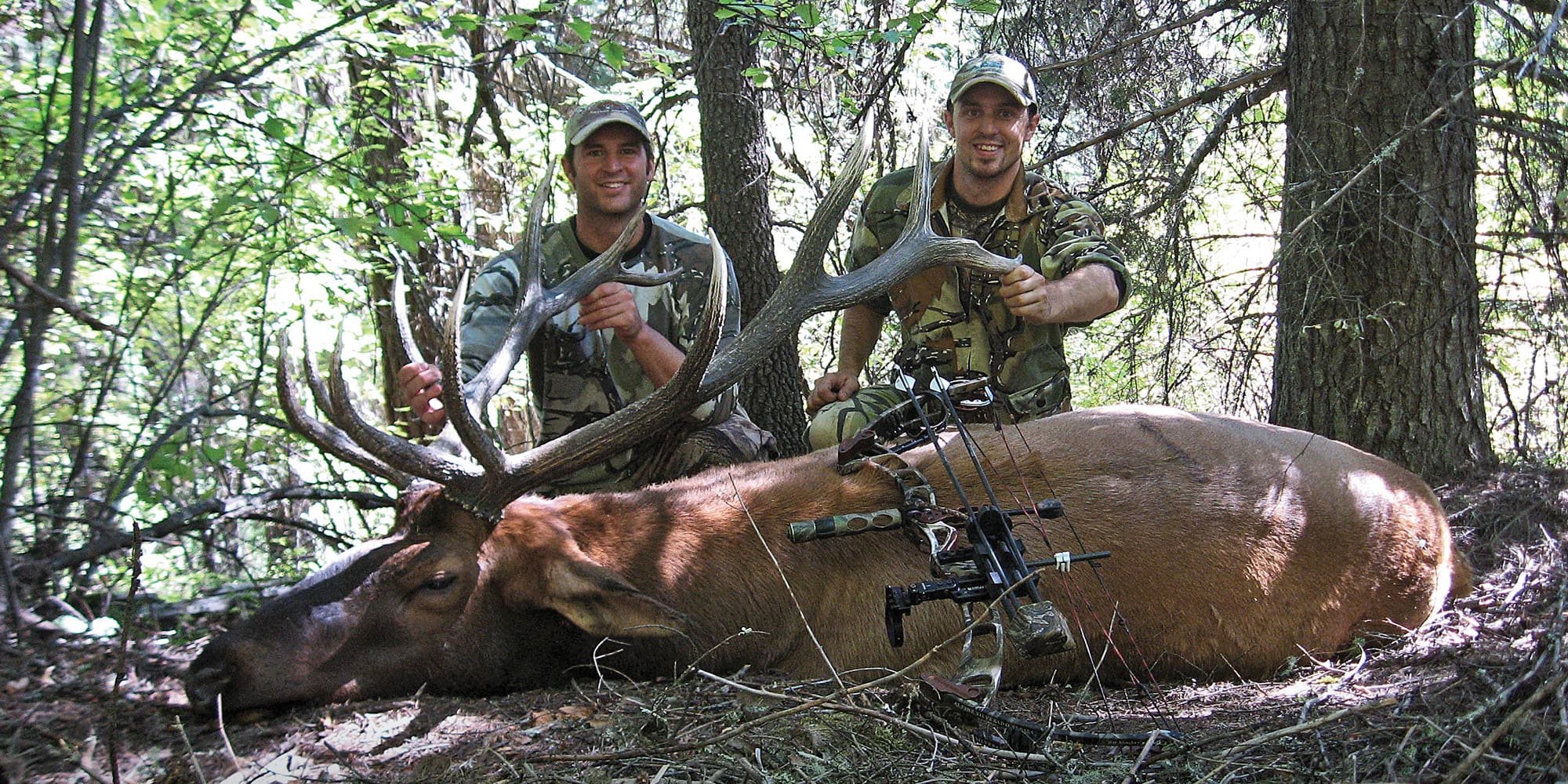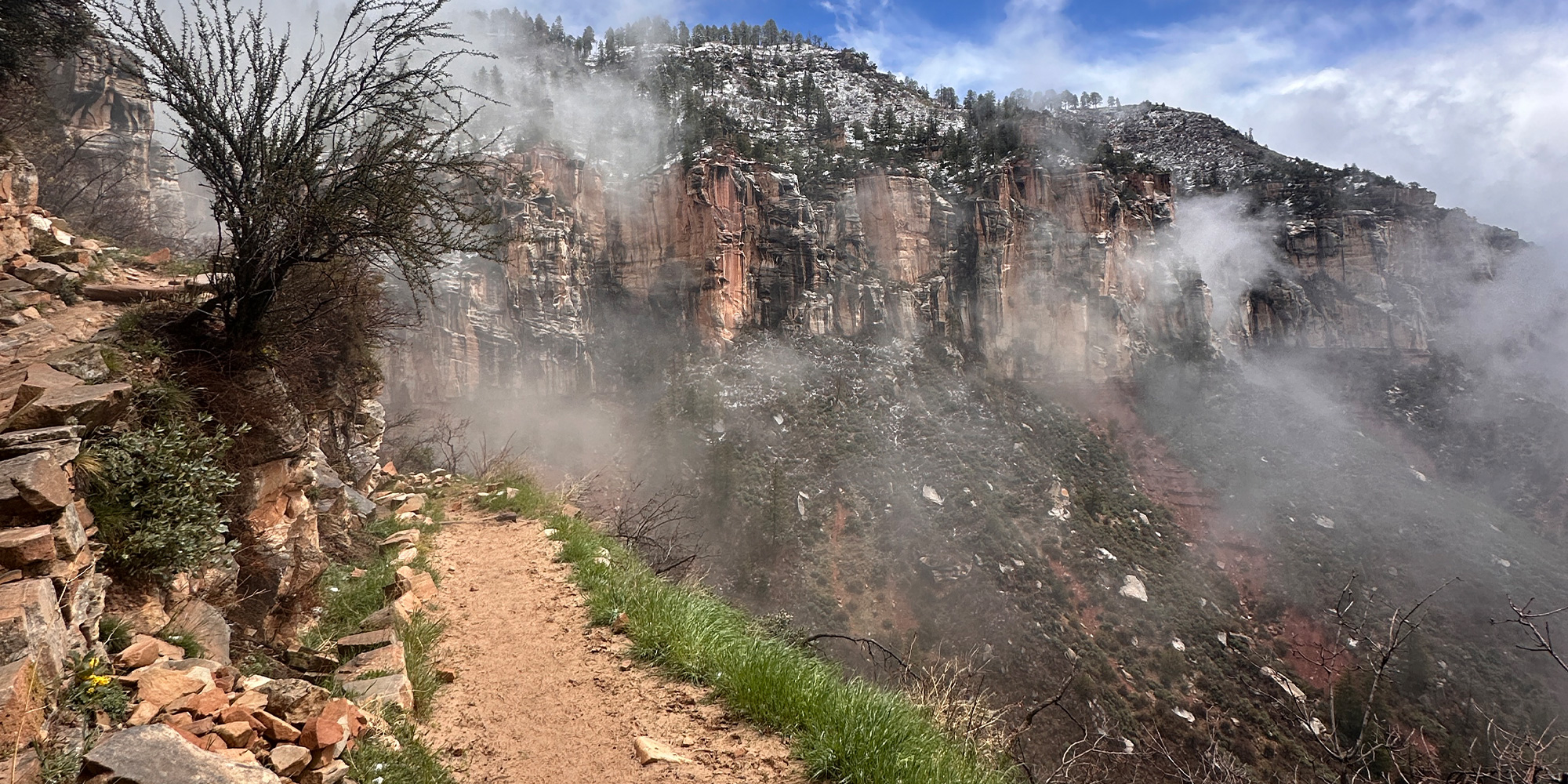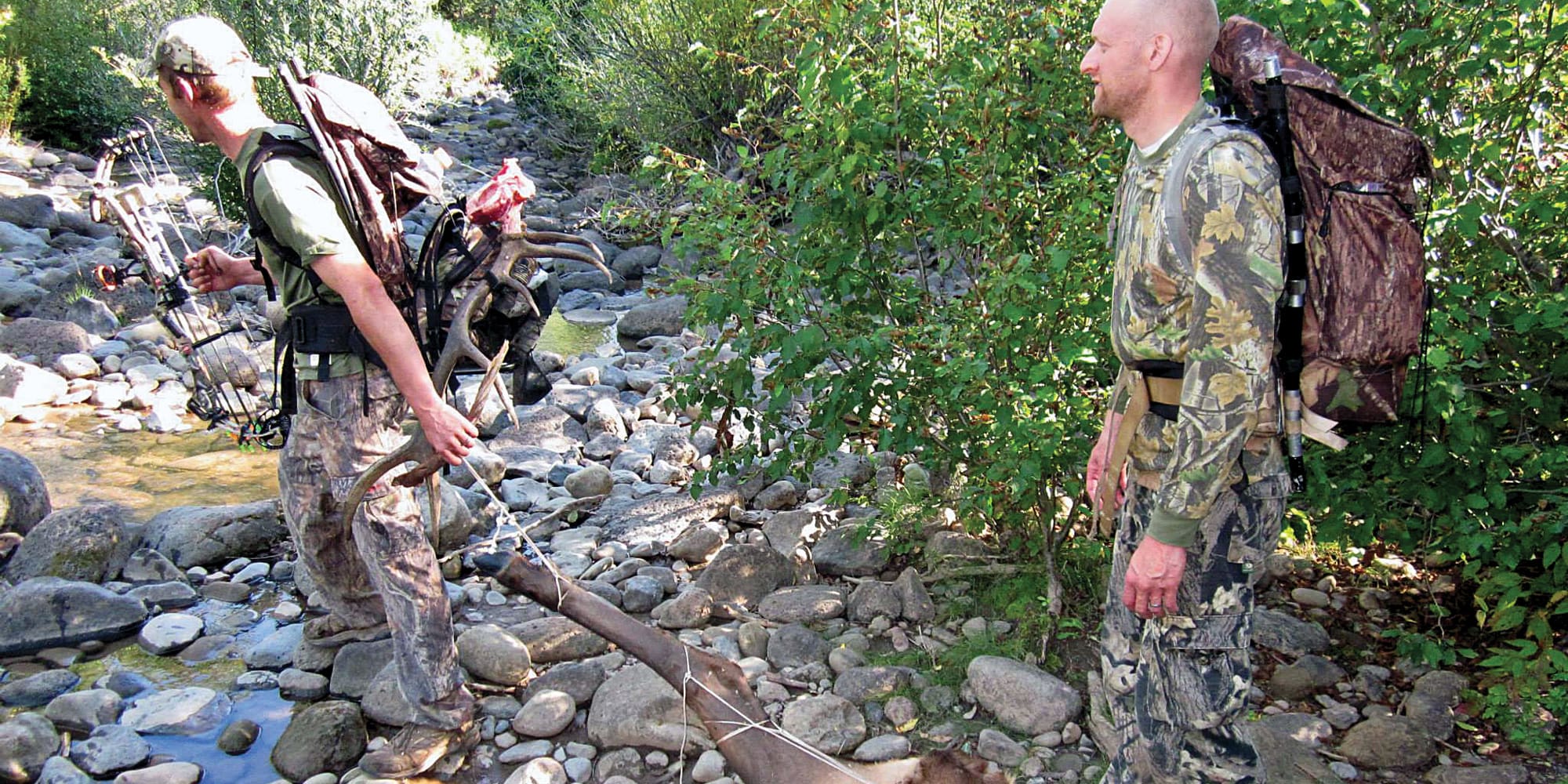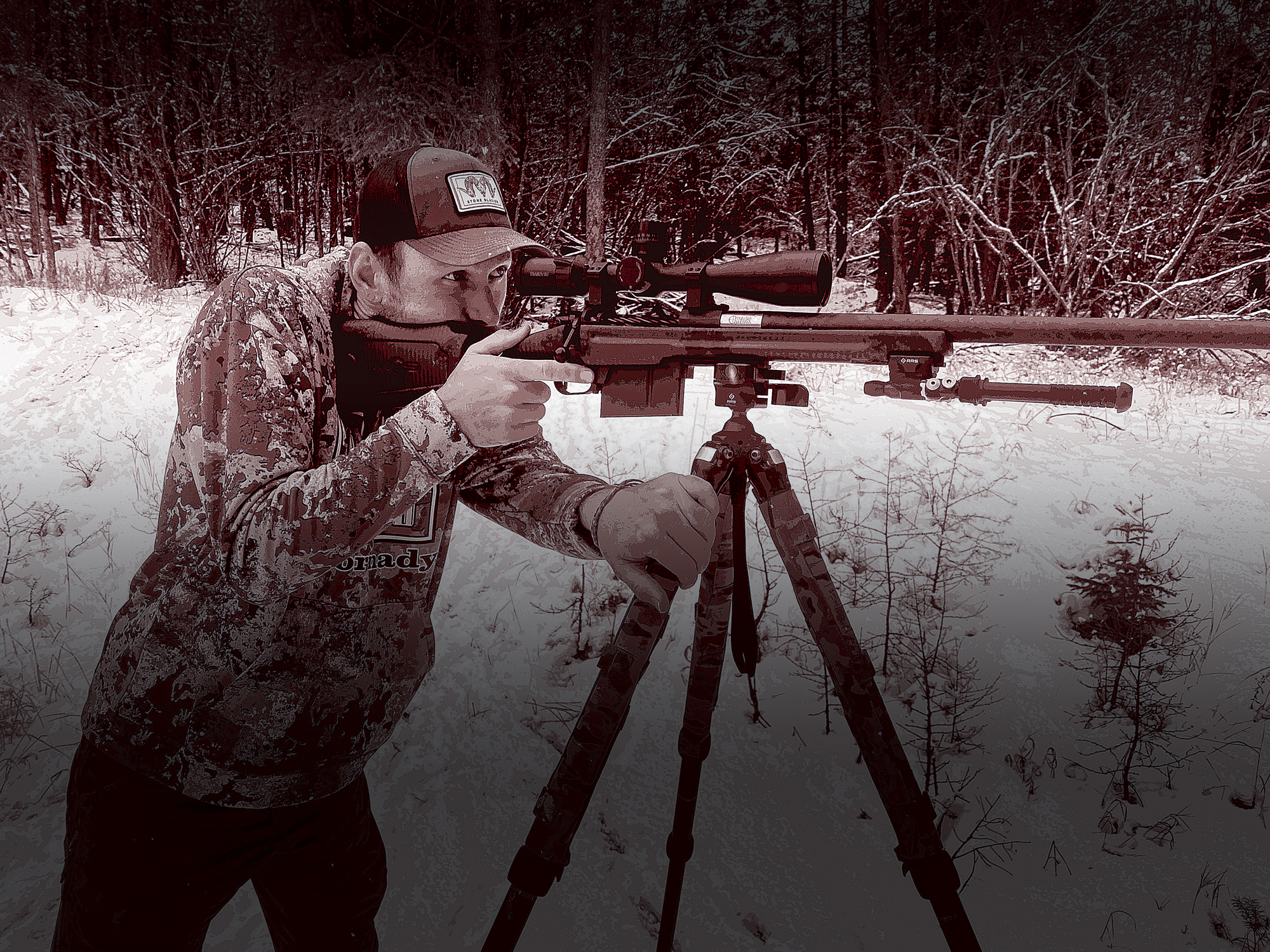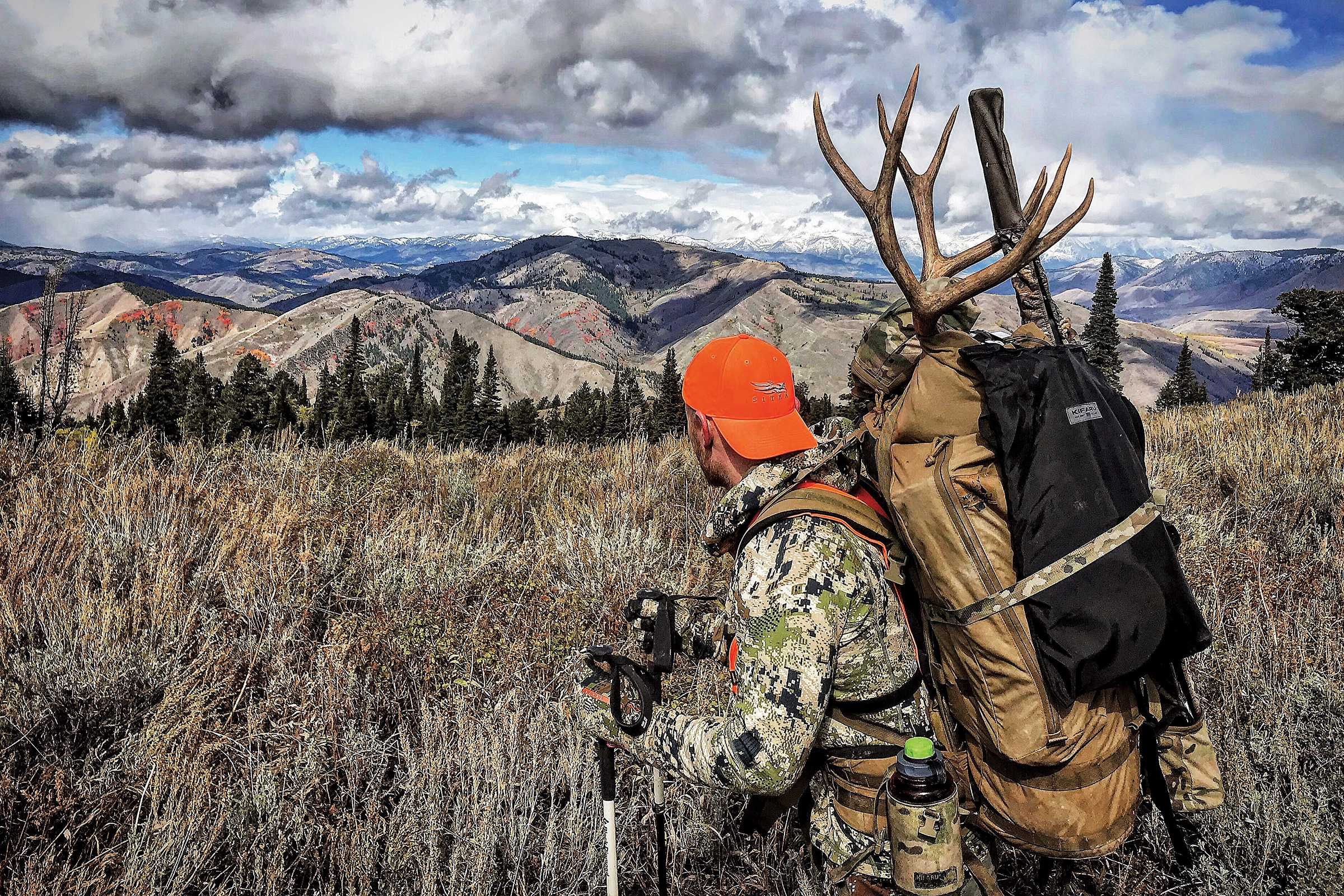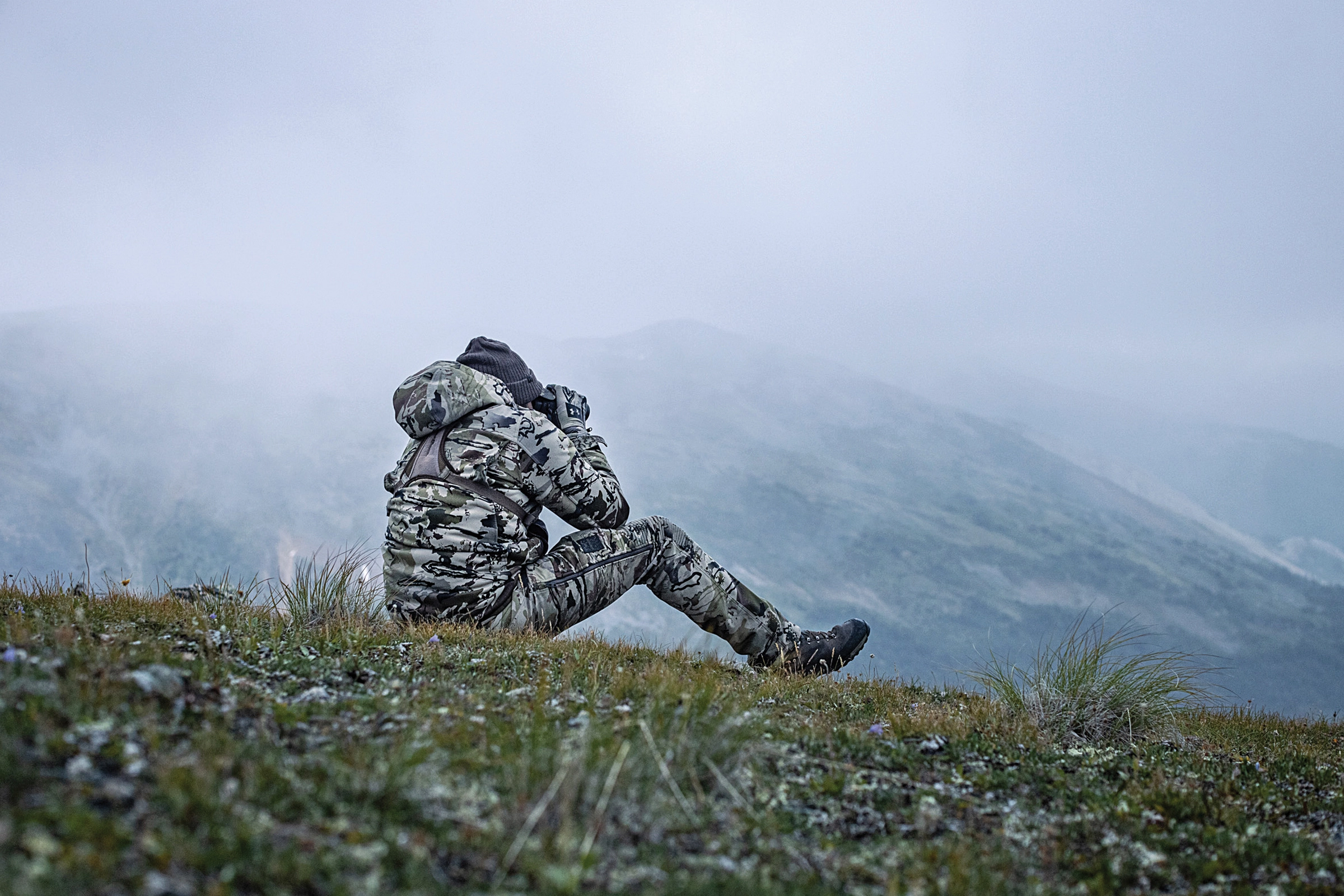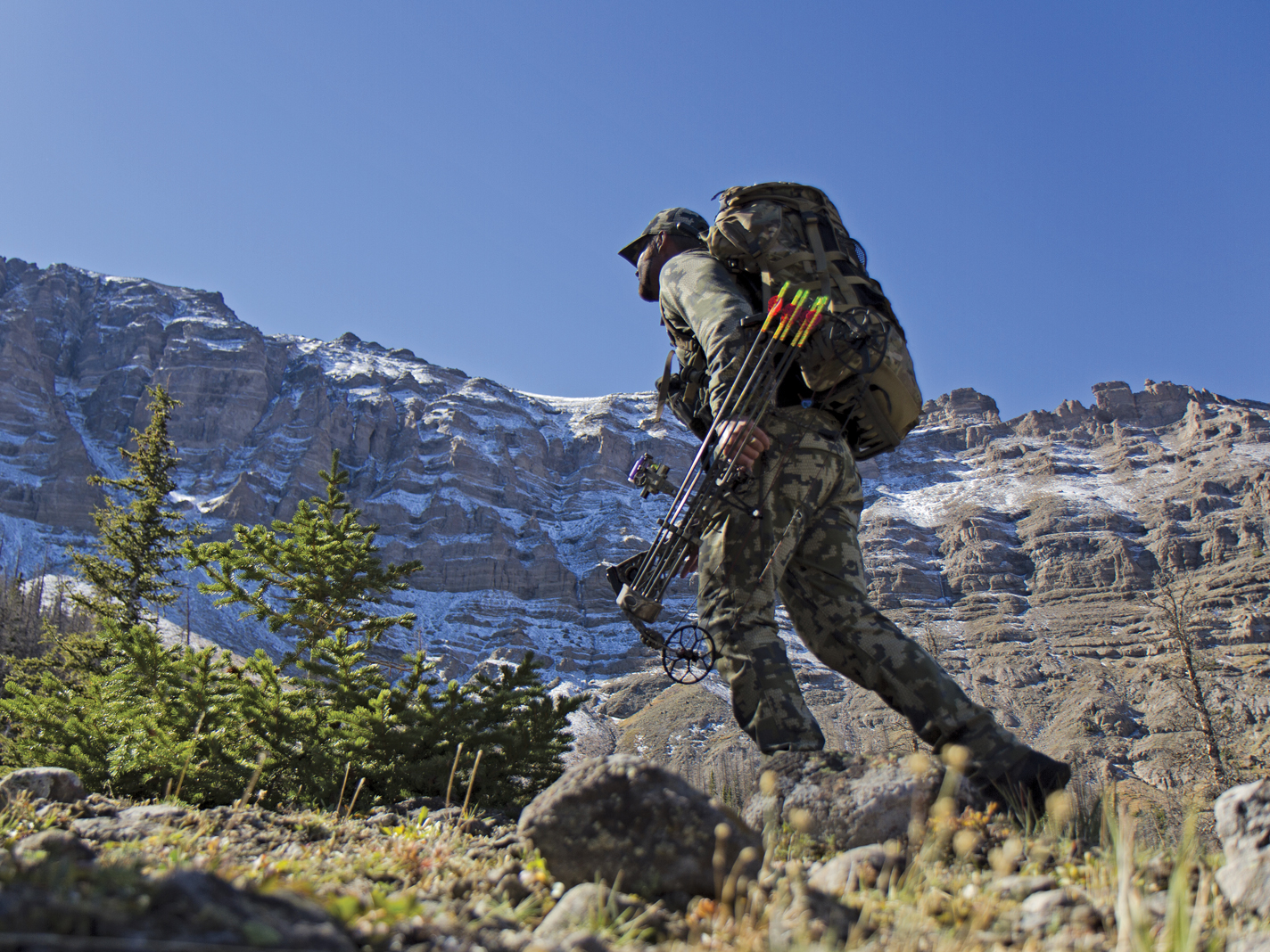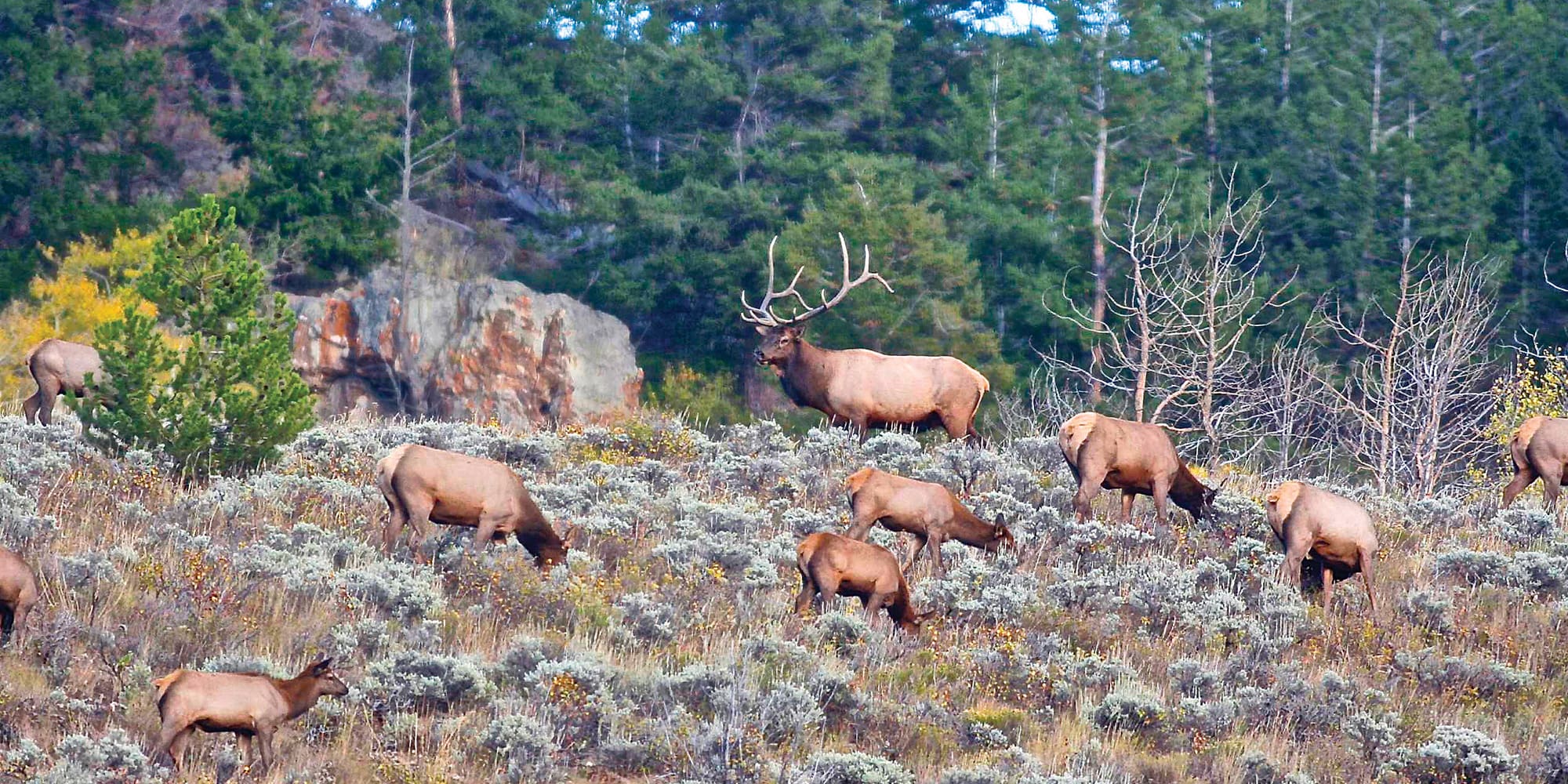
NOTICE: Certain links on this post may earn a commission for Western Hunter Magazine from Amazon or our other affiliate partners when you make a purchase. Thank you for your support.
Hunt Elk Where They Go To Survive
I could feel the morning breeze go still and then a perceptible switch of direction. The coolness to the exposed skin on the back of my neck was now apparent. Even though the group of bulls I was watching was 600 yards away, I knew they would bust me. Experience and age taught me to subconsciously pay attention to such things so when they happened, I had the awareness. The scene I sat watching across the canyon, seven bulls feeding, seemingly without care, would soon change.
The first bull alerted, a three-year-old five-point, and soon every bull stood still in a state of heightened awareness. This wasn’t a situation that would soon resolve and allow the bulls to go back to feeding. Hearing a noise is one thing, but human scent being processed by the elk’s olfactory nerves would mean they would probably head to the next zip code, and soon.
Six of the bulls took off at alternating lunging gallops and trots dictated by terrain and vegetation, having learned that putting distance between themselves and danger was the best decision. The biggest bull, a 350-class six-point, slunk into a patch of densely packed Douglas fir trees about 30 yards away. I could no longer see the bull but was in a position cross-canyon to see his exit if he left the cover.
I set up my spotting scope and focused-in on the patch of trees. Between branches, I made out the color transition on the rump between the buckskin-shaded rear end and the russet hairs on the hindquarter. Soon, I picked out an ear and some brow tines. The bull stood completely motionless in cover, moving nothing more than his ears and the autonomic rise and fall of his chest cavity. He already knew I was there but didn’t know exactly where. He was going to locate the source of danger and move out with stealth as opposed to a panicked run for distance like the immature bunch had done.
The bull didn’t move for almost twenty minutes and finally decided that he had had enough of the situation. He moved off with a quiet and controlled purpose. The bull had learned along the way, surviving seasons and other encounters, and now possessed the ability to maintain composure, identify danger sources, and survive another day. Most likely, he would never be caught in this spot again in the daylight hours.
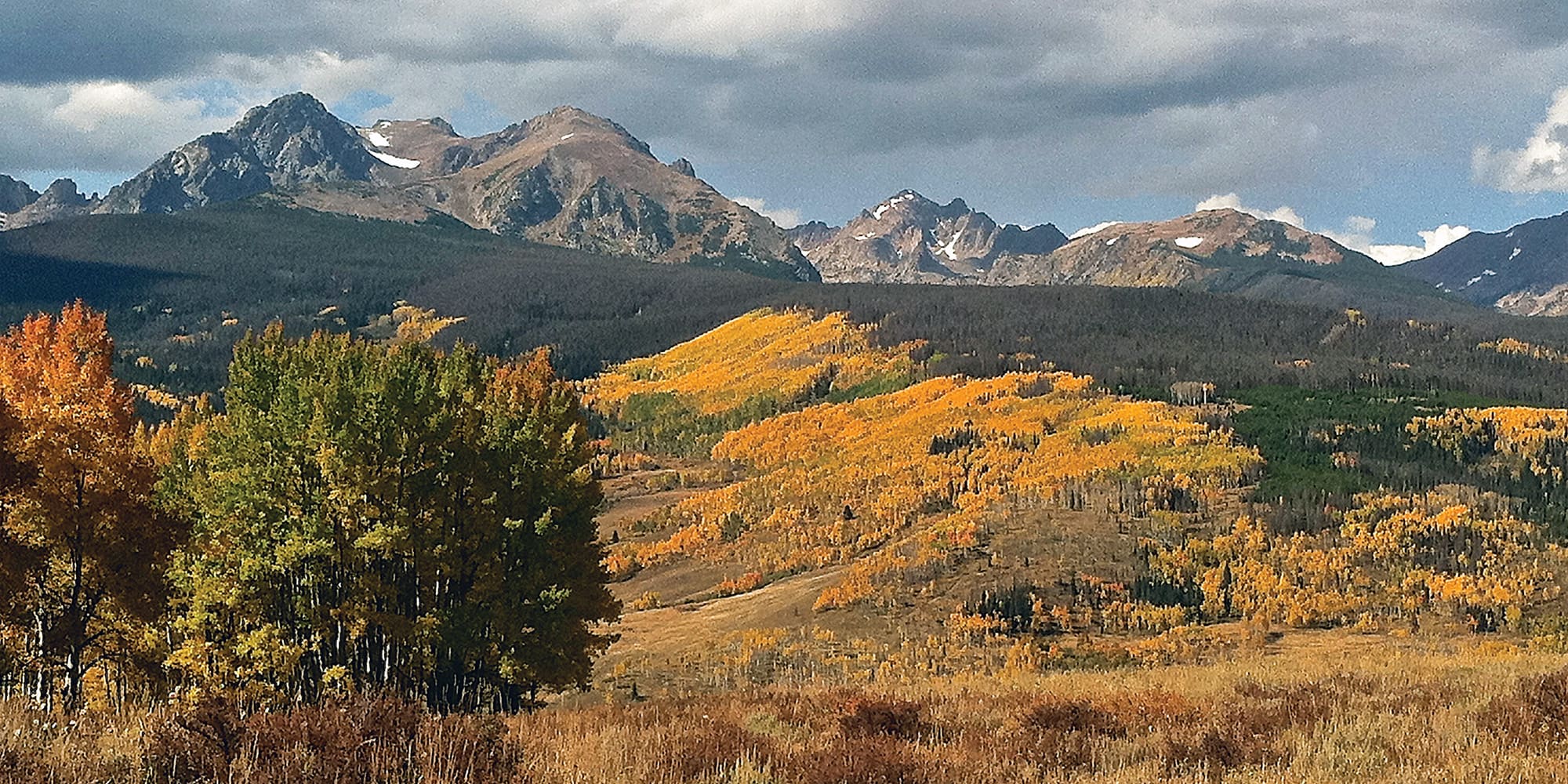
Elk Intelligence
This anecdote from my hunting history is nothing more than an example of what kind of awareness and decision-making ability I feel a heavily-hunted animal can possess. In my experiences, I have learned that a mature bull elk from heavily hunted public lands is one of the wariest animals anyone can ever hunt. All older animals who experience repeated negative interactions with human hunters can become very wary, but I think bull elk can take it to another level. On many occasions while watching them, it is obvious they have a sort of contemplation and then make a decision. On what level they possess a kind of intelligence we can relate to, I have no idea. But if you are going to hunt elk with any degree of consistent success, you had better brush up on your animal behavior game and approach the process like a thinker and not just a gear-laden hard charger.
Hunting elk with consistent success is a bachelor’s-degree-level pursuit. There are cookbook approaches that are helpful but you must be a student of the animal. It’s my opinion that you should tailor your hunting tactics to deal with the bull’s mindset at different times of the year and adapt your strategy and tactics to that calendar.
There are four distinct phases of a bull elk’s existence in late summer through autumn and appropriate approaches to deal with them as a hunter. These phases are pre-rut, the rut, transition time, and late season. All of these phases have transitions between them, and the rut can be broken down into a few phases itself, but for the sake of brevity, we are talking four here.
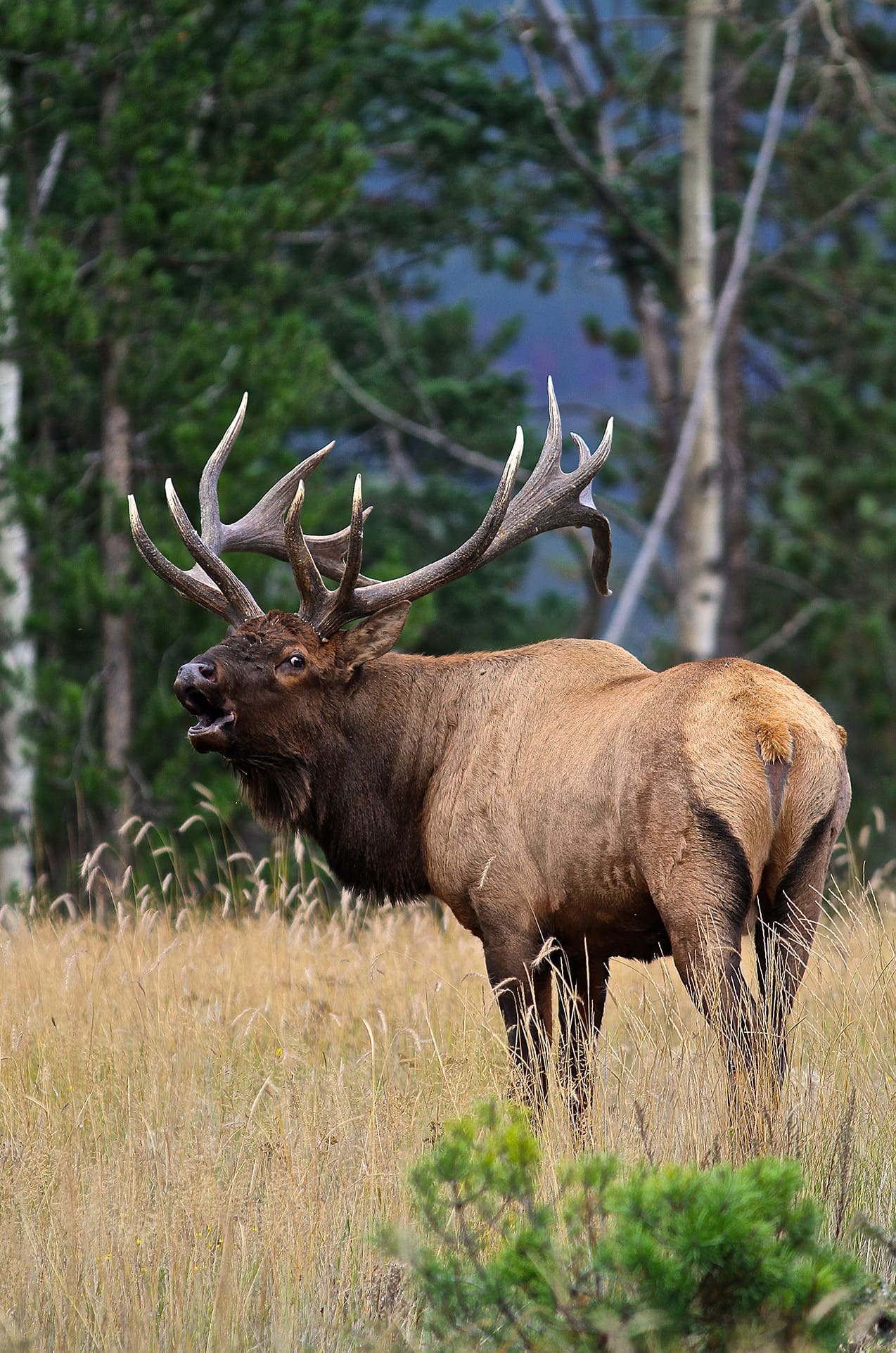
Pre-Rut
The first phase is pre-rut which generally starts in mid-August. Bulls have spent the summer packing on the pounds and the groceries in what is usually the best and most lush feeding spots the area has to offer. They have rubbed the velvet from their antlers and are experiencing a slow rise in hormonal levels and interest in the ladies as the days pass, but not enough that it takes them away from feeding for many hours a day, sometimes in broad daylight.
The Achilles heel these bulls possess this time of year is their preference for routine. They might not do the exact same thing at the exact same time every day, but they don’t tend to wander from a specific range much at all. In my opinion, this is a huge vulnerability in a bull’s defenses and something an astute hunter can capitalize on.
If the season permits, an investment of time and effort into CIA-level surveillance of a pre-rut bull can give a hunter an ambush opportunity at a relaxed animal at short range. This tactic can be ideal for bowhunters who are willing to forgo the drama and excitement of the rut for a good chance at success. Only the dedicated with time need apply here.
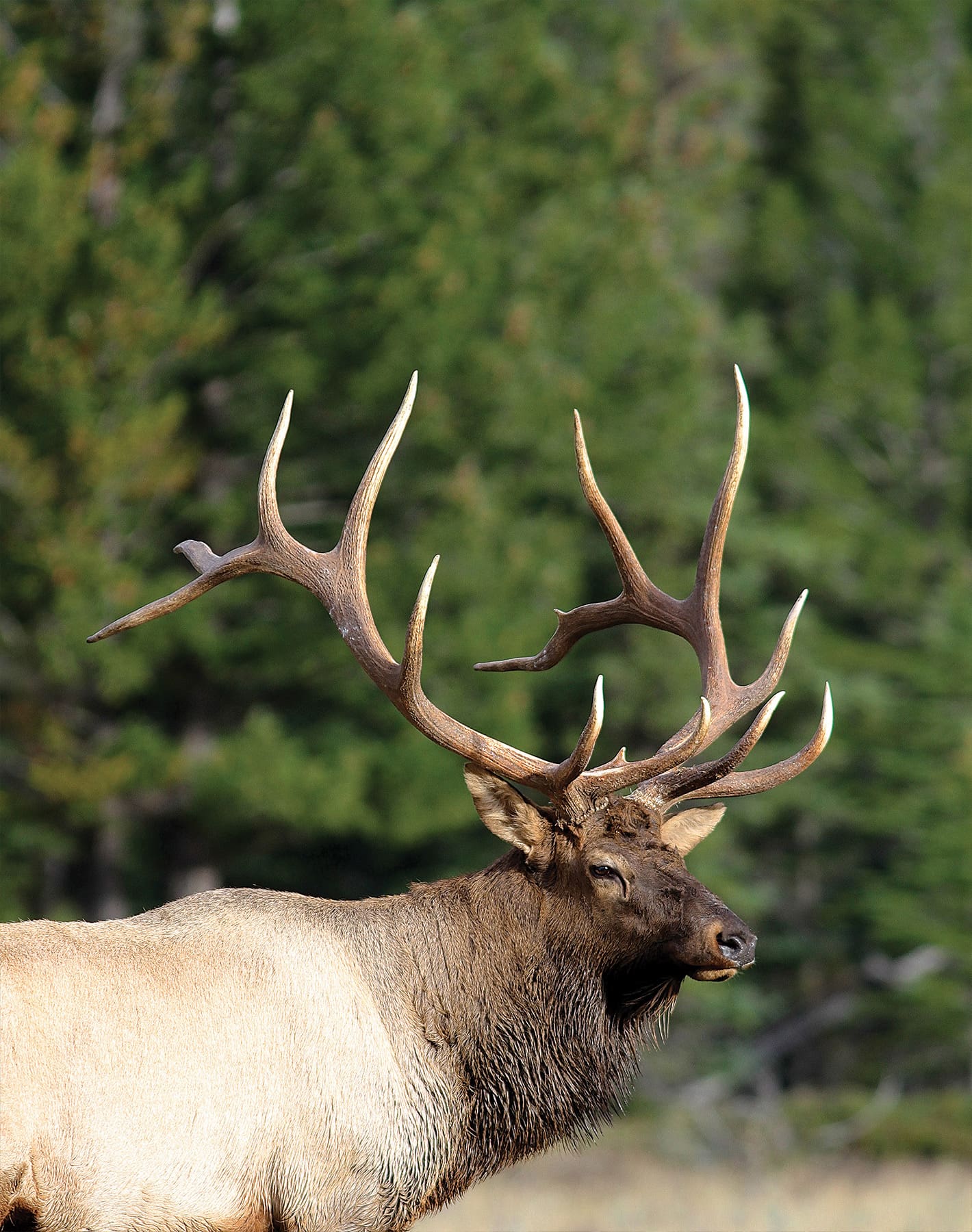
The Rut
After the first week of September, bulls are solidly interested in cows. This doesn’t always translate to rut-crazed bugling insanity but instead is a healthy distraction for the hunters in pursuit of them. The large and obvious problem is now he probably has a few dozen bodyguards who aren’t very distracted by anything more than him and his buddies with their mostly annoying behavior. Calling can be great but has a higher level of effectiveness on younger bulls with less education.
Once again, an ambush strategy and tactics can be a deadly method to put a mature bull on the ground and be a slam dunk on younger bulls being left out of the fun. Many years ago I was muzzleloader elk hunting at timberline in one of Colorado’s quality managed units. I had been trying, unsuccessfully, to stalk within range of a huge, 380-class herd bull for the better part of a week.
The herd he bossed around contained 70 to 80 of the most wary and sharp-eyed cows that would put a gun-shy coyote to shame. These ladies displayed a coordinated neighborhood watch system that had me blowing them out of basin after basin, and this wariness would sometimes keep them out in the wide-open alpine with zero chance of approach, even when I tried belly crawling through knee-high, swampy alpine willows.
One morning, I sat on a ridge and could hear the bull and his raspy scream echo in the timber below me. I began to realize they were coming uphill and would cross the ridge just below where I sat. This stroke of sheer dumb luck and coincidence of where I decided to hunt might just give me a shot at what most would consider a “bull of a lifetime.”
I had a perfect rest, the rocky saddle notch in the ridge was 75 yards below me, and there was a slight uphill breeze in my face. I literally shook with anticipation and excitement as the first few cows popped up over the ridge and trotted off into the shady side of the hill. A moment later I saw the bull’s tines before he stepped up into the bedroom-sized flat spot, and like a moment scripted from a fantasy hunting novel, stopped in his tracks and ripped into a neck-arching, head-twisting bugle.
My confidence was sky-high as the front bead settled on the crease behind his shoulder but instead of a thunderous, smoky “boom!”, I heard a sickening, low “pop!” of a percussion cap firing on powder that refused to ignite. I scrambled to clear the spent cap and put another one on as the bull stared in disbelief at an unknown creature fumbling behind some rocks. He let me pop off another cap before his little voice told him to get after the cows.
The story still haunts me, but the lesson learned from that day is that of understanding what about an elk’s behavior makes him vulnerable to us. Herd bulls rely on their cows to watch for danger and are very much distracted by the rut. The best tactic might not be to attempt and draw him away from them but instead, show patience (albeit unintended by me at the time) and wait for the opportunity to present itself. This might mean exhaustive days of trailing and leap-frogging the herd in attempts to get into position for a shot, but in today’s age of highly educated elk, it could prove to be much more effective than trying to lure a smart, old bull away from his cows.
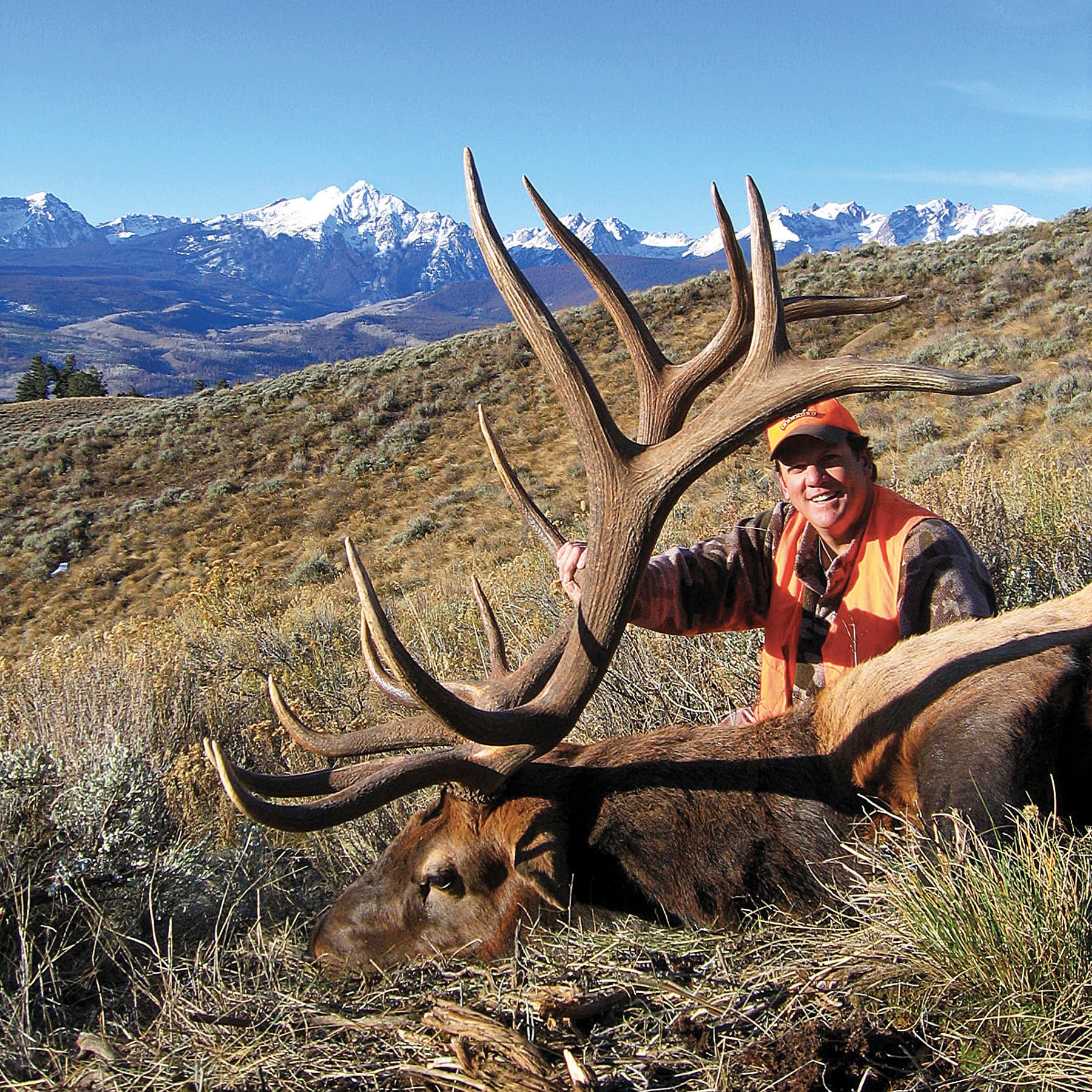
Transition Time
When the urges of the rut fade and testosterone levels drop, bulls will transition into a recovery mindset that coincidentally aligns with many rifle seasons across the West. Bulls become very wary and seek solitude. They are exhausted, hungry, and are also feeling a sense of increased human activity in the mountains that sends them into hiding. Bulls with age on them head into their “nests.” These are spots found by a bull in his life, either by exposure from an older bull or simply by their natural tendency to seek refuge and recovery this time of year. These spots have cover, good food, and water within very close proximity, but most of all, they offer security.
Older bulls will leave the cows first and head into these nests, and as the rut slows and ends, younger bulls finally tire of the rebukes from the ladies and wander off in search of their older buddies. Bulls seem to congregate together in age groups but the largest bulls remain solo or with another bull or two and display a somewhat anti-social behavior relative to the raucous time of the previous month.
Finding these nests that bulls gravitate toward takes effort and experience, but once you recognize the critical ingredients these nests have, the search becomes easier. Classic hunt camp spots in epically beautiful spruce and aspen forests are lovely to hike and hunt around but are not the spots where bulls go to recover. If I was going to use one word to describe the country where one might find a bull nest it would be “nasty.” Yes, nasty because that is typically what it takes to eliminate hunting pressure. Longer distances from roads, steeper hillsides, and heavy cover are what can make up these nest spots. A bull has a will to survive and by the time he has any age to him, he has discovered a spot that allows him to grow older.
What allows some hunters to be consistently successful hunting bulls during this transition period between the rut and winter is the fact that bulls become comfortable in the spots of security and can linger in the mornings, soaking in the warming sun rays and grabbing extra bites of grass as they voraciously feed. There is a bit of a cookbook approach to hunting elk at this time of year because, in my opinion, the recipe for success is obvious. Find those ingredients they need in the right country and start looking. Water is the number one ingredient here and provides a good start for this search.

Late-Season
As the days shorten and the temperatures drop, elk instinctively know they need to be at certain places at certain times of the year. As with most mature animals, bull elk can be very philopatric in nature. That is, they tend to return to the same spots at the same times of the year. This is a critical flaw in an elk’s armor because it’s during the late season that bulls can be spooked and will still stay in the general area. After all, that is the place they know to survive the winter. Now that area isn’t a few city blocks but instead, a few square miles.
What I have found is that bulls will come back year after year as long as conditions and forage base allow them to sustain themselves. Oftentimes these late-season spots are places you might find sheds of these bulls from multiple years because they have learned that these locations have everything they need to survive the winter.
The biggest bull I’ve ever taken I found the previous year right after the late elk season ended. I planned my entire next season around the idea that this bull would return to the area again in preparation for the winter, and that he did. I found him a few days before the season began and had a really good idea where to be on opening morning. At first light, he was feeding with his buddies on a hillside, in plain view of the road, a mile away across the canyon, but only 400 yards from me on the same mountainside. I waited as he drew nearer and turned broadside, and I then sent a 180-grain Nosler his way. One follow-up shot and I was soon admiring what might be the bull of my lifetime from a heavily hunted, over-the-counter elk tag unit in Colorado.
Cover ALL the Bases
Being consistently successful on elk means you must cover all the bases and address all of the variables of success. Great gear helps, but that is just part of the approach. Physical fitness is necessary simply to hunt in places most elk call home. Weapon proficiency is imperative, but the best paper puncher or bench rest shot isn’t going to bring home elk meat if they can’t find elk. Knowing what an elk wants and needs to thrive and survive is an integral part of your elk hunting arsenal. The knowledge you possess between your ears and the experiences you have gone through to gain that knowledge shape a decision-making process of literally locating an elk. The next time you find yourself scratching your head, wondering where the elk are, ask yourself, “What’s he thinking, and why?”


